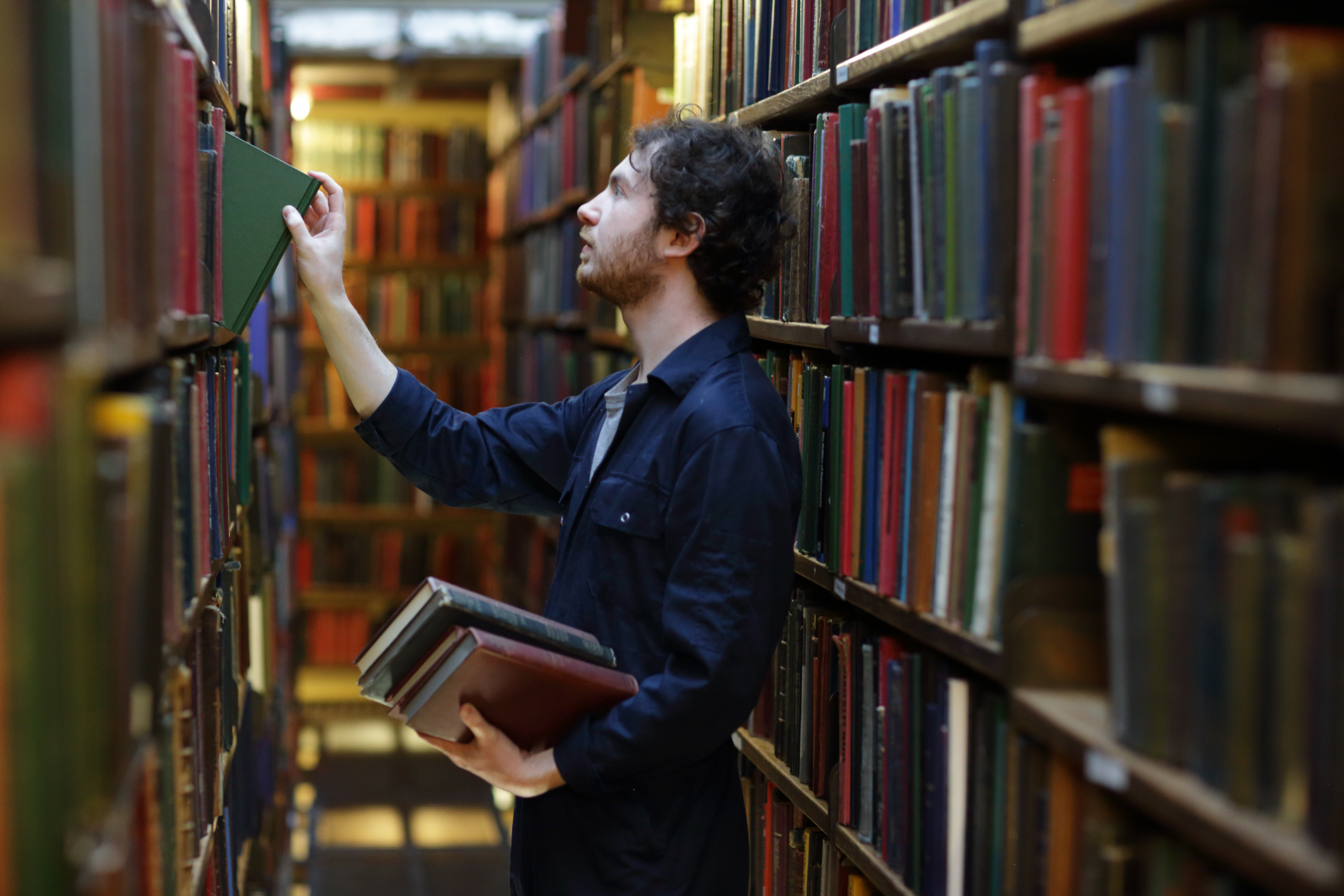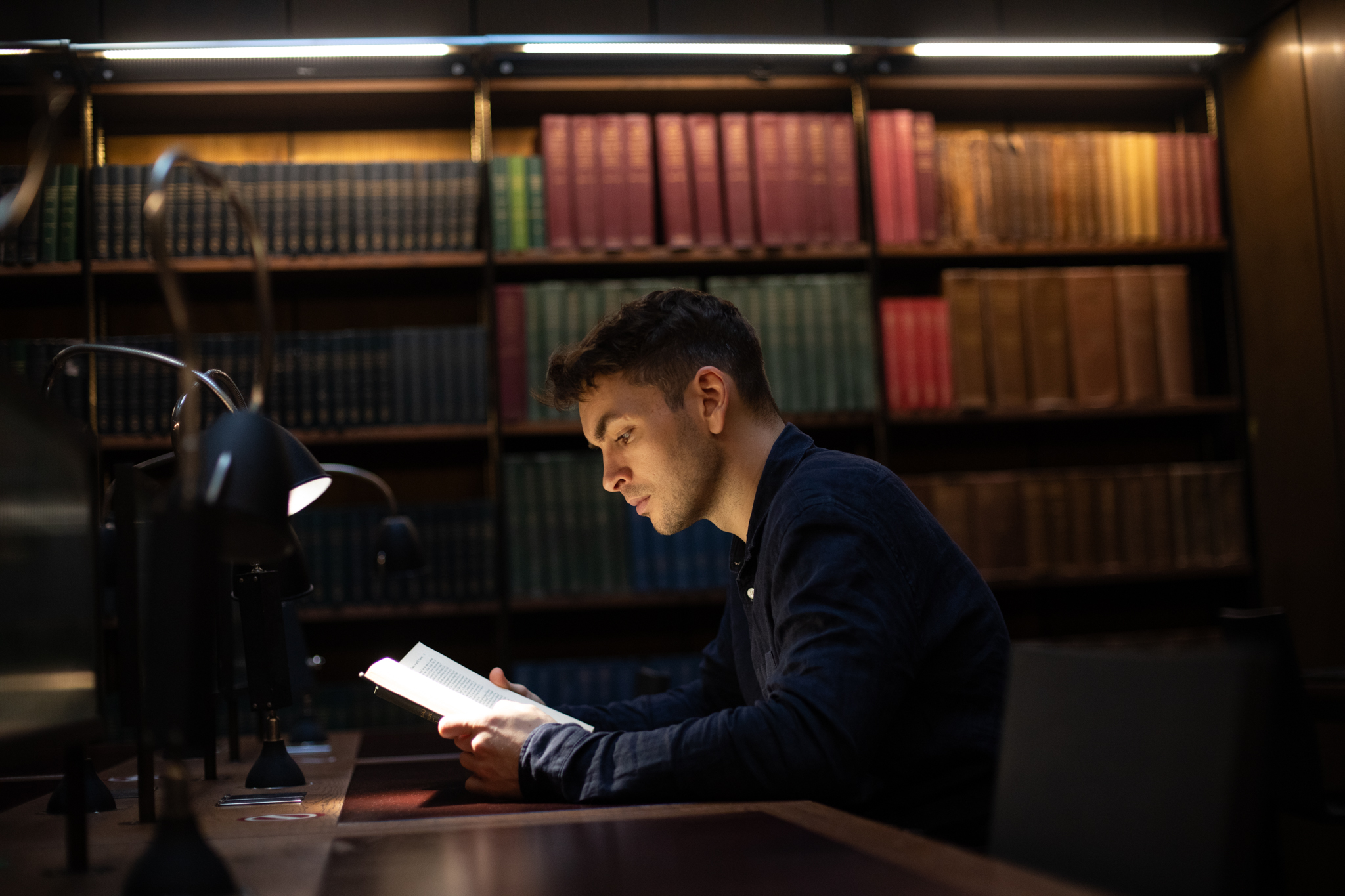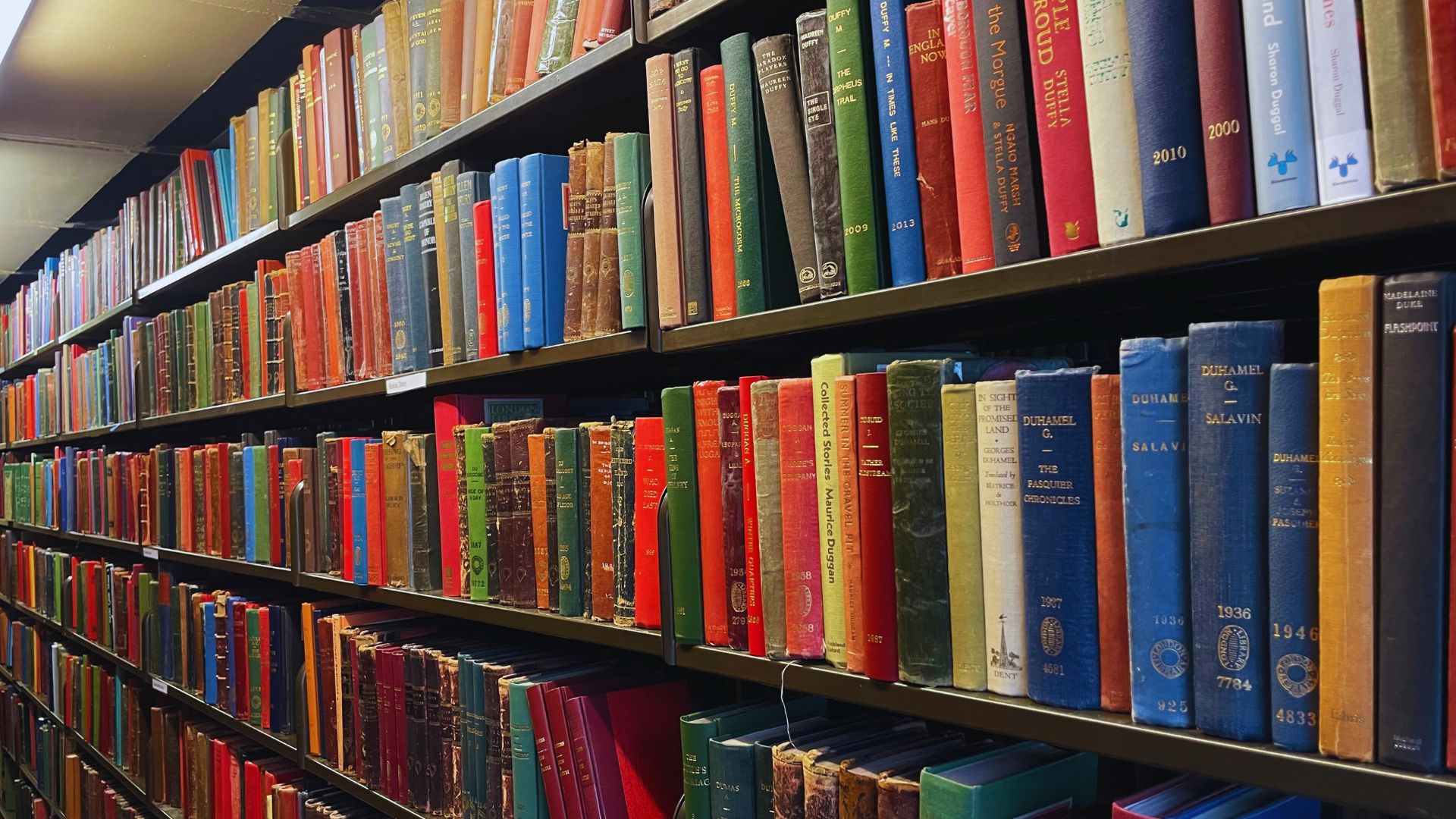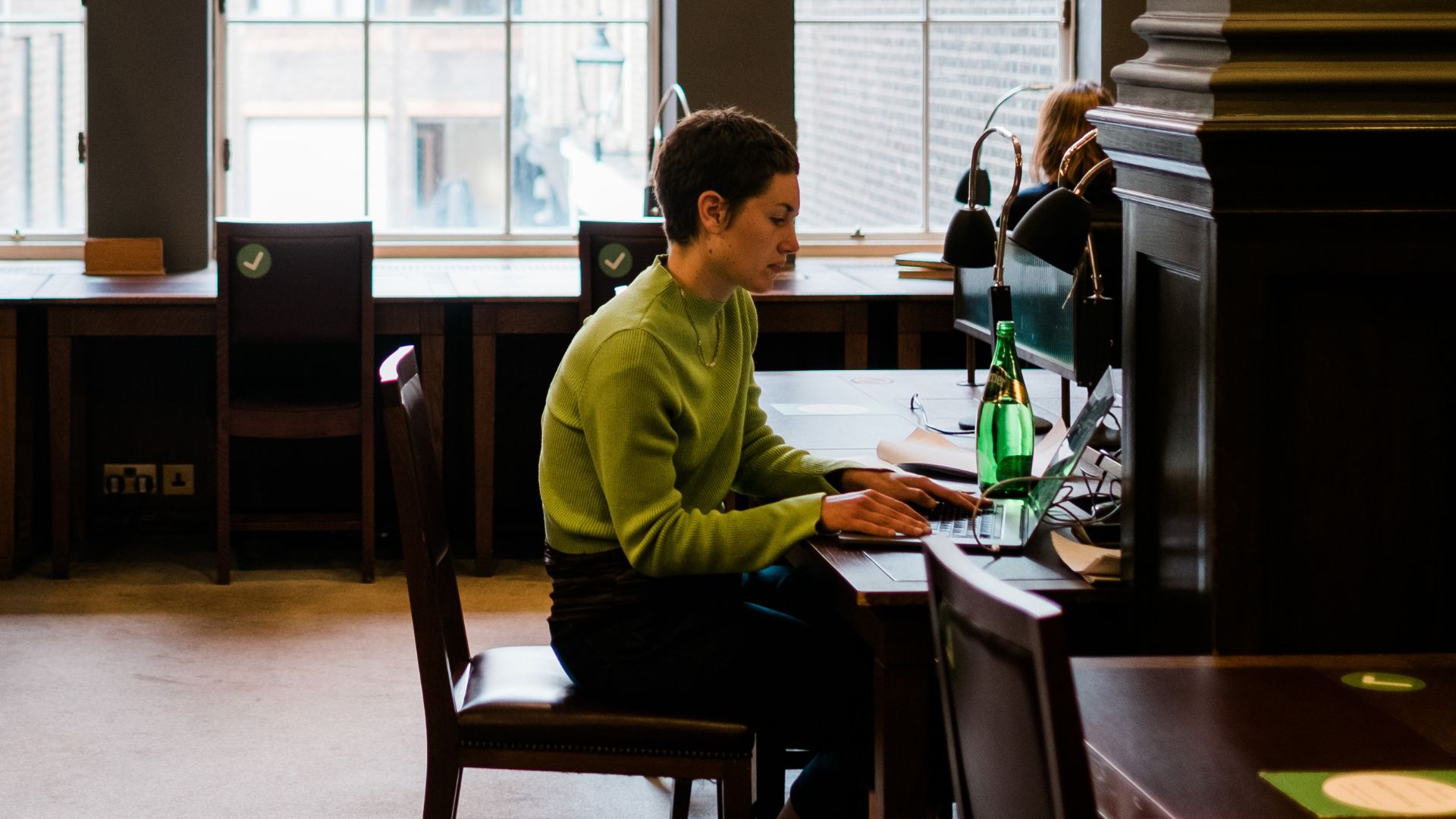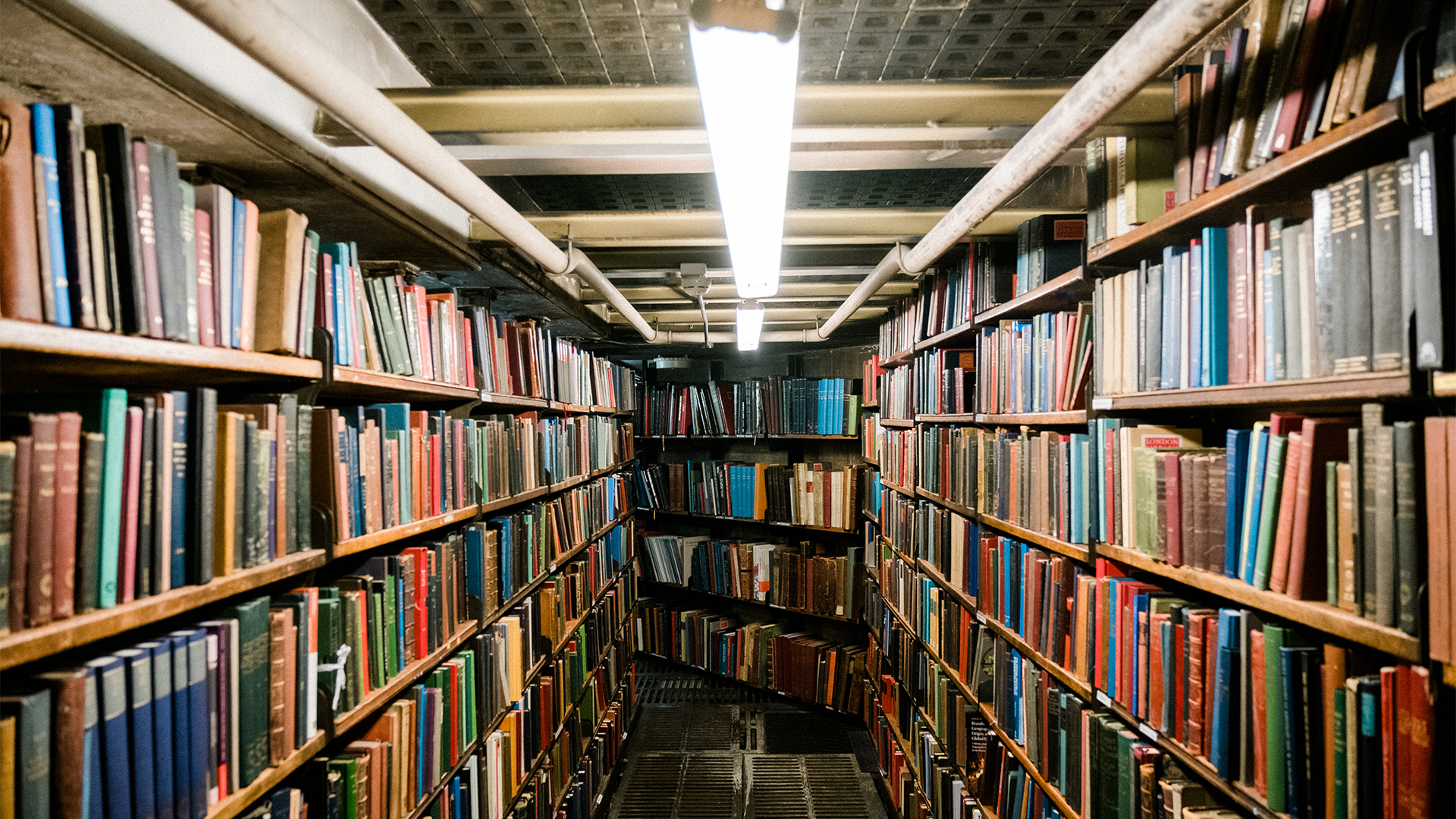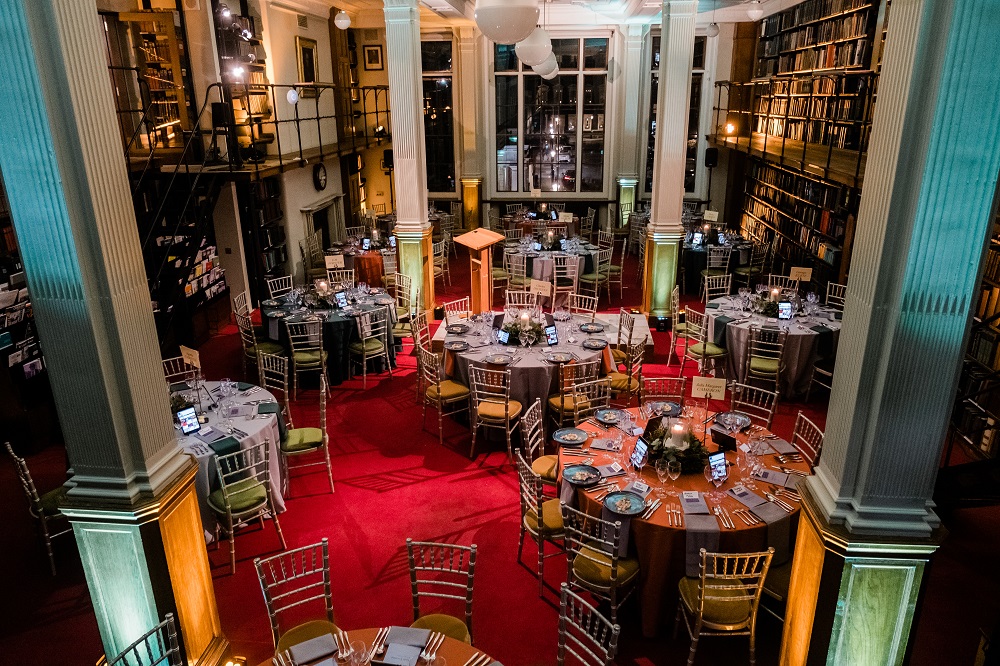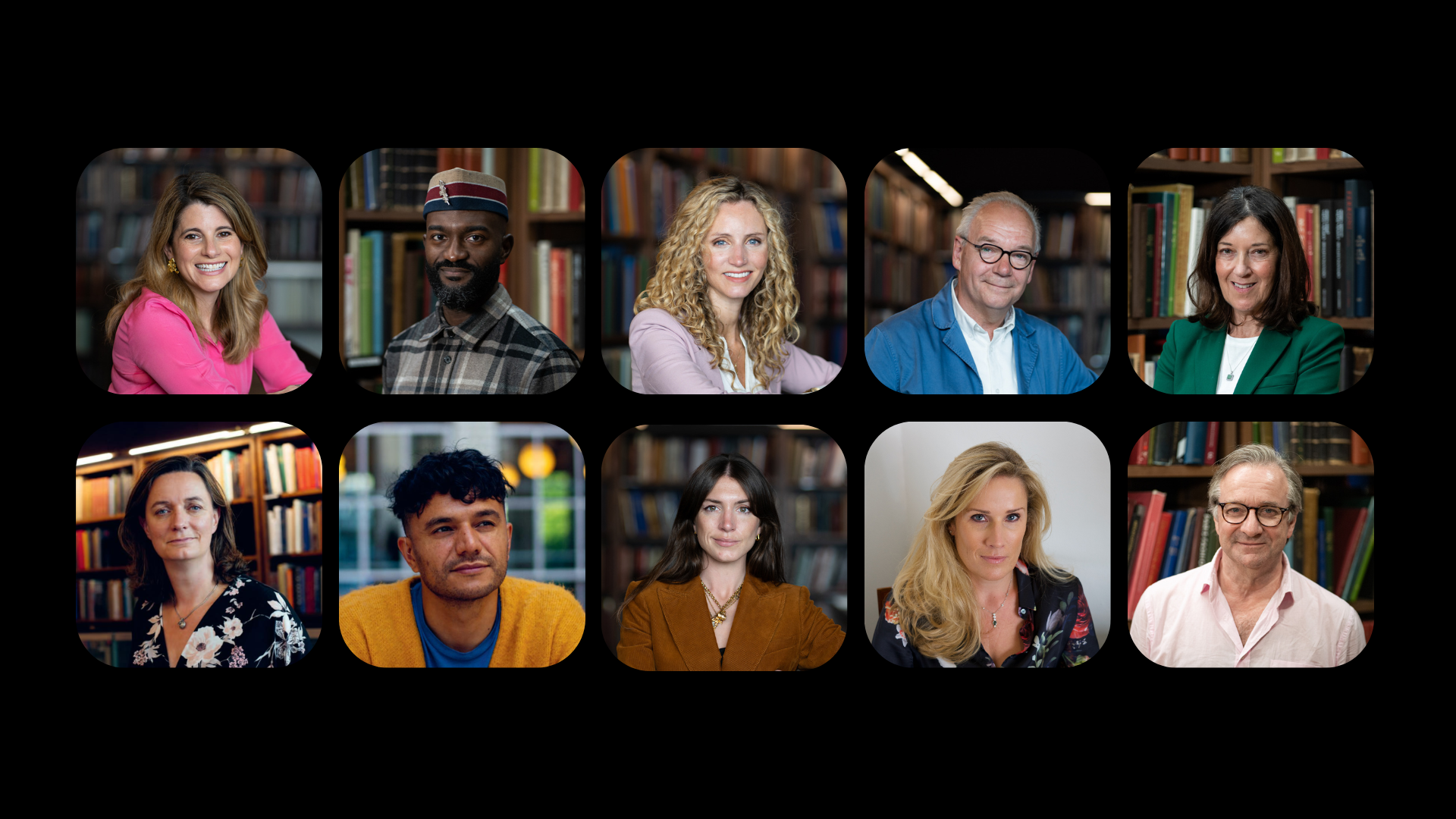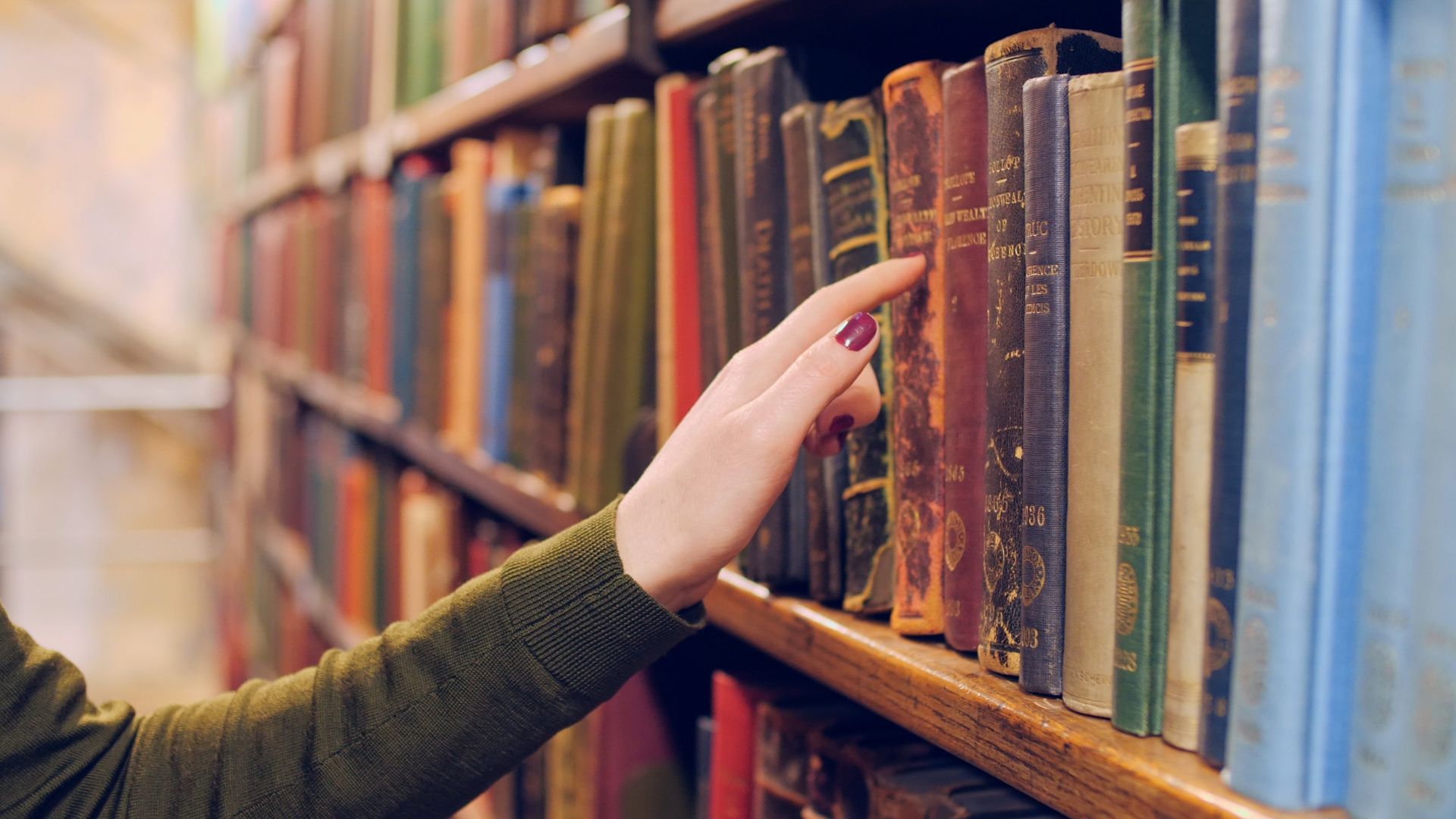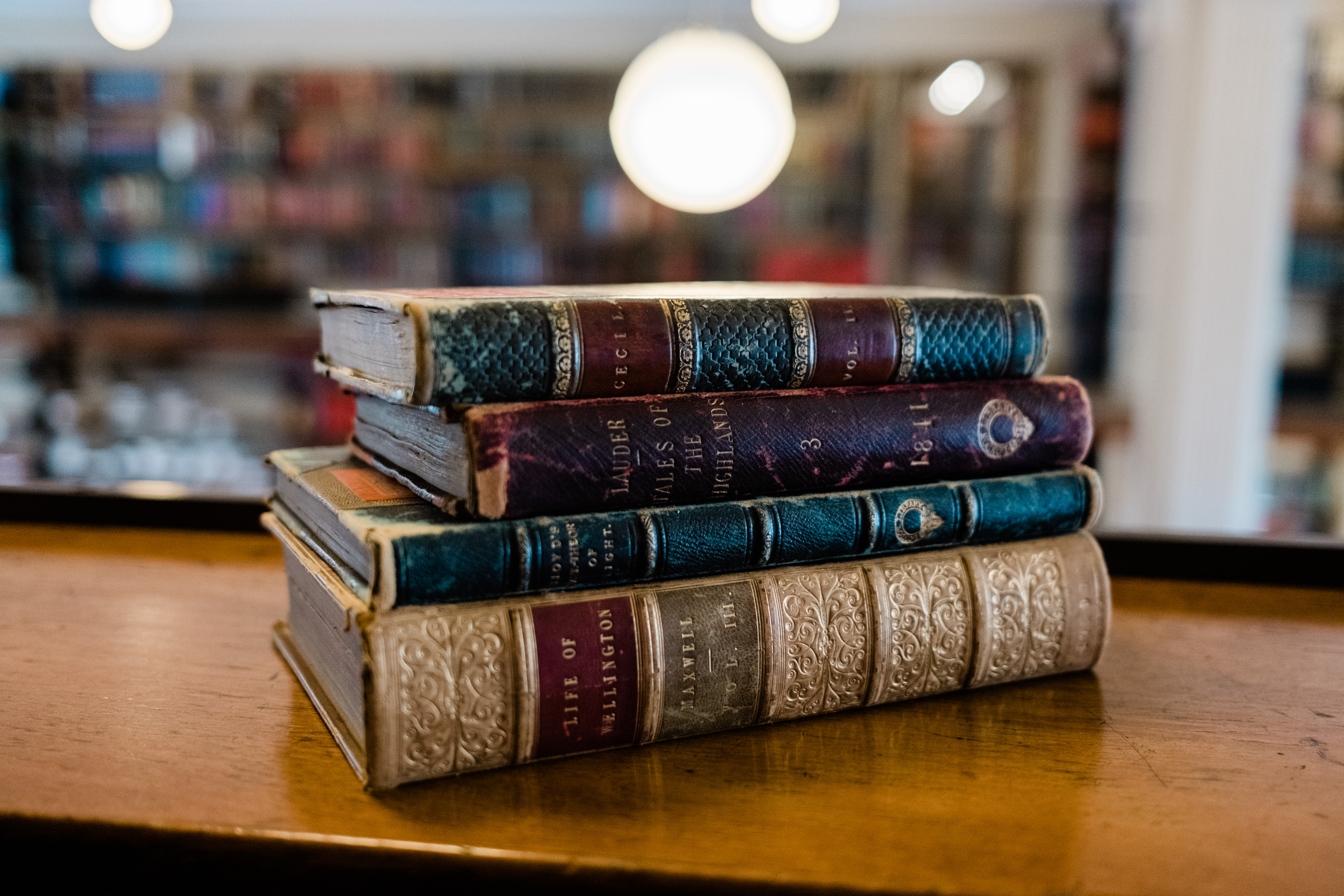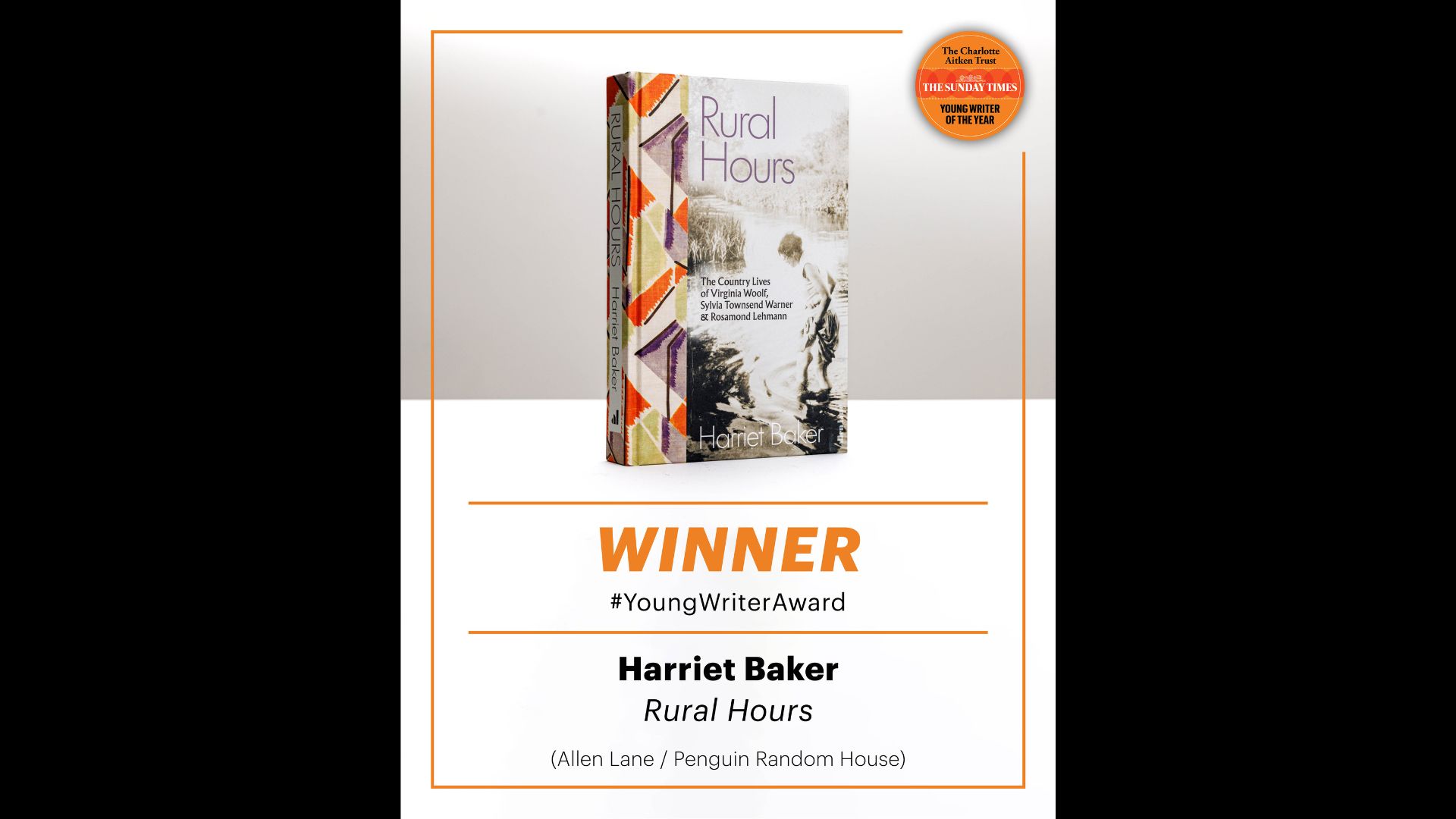As we reflect on the commemorations of World War I which began 100 years ago this month, The London Library’s Head of Bibliographic Services Dunia Garcia-Ontiveros explores the fascinating, turbulent five-century history of a rare volume in the Library’s collections that has literally been ‘in the wars’. Adapted from an article originally written for History Today.
Books often contain stories of dramatic events but we seldom come across a book that has a turbulent history of its own and it is even rarer for that history to be well documented. A volume from the London Library speaks eloquently of its former owners and of the events that caused it to travel from the Swiss city of Basel to London via war-torn Netherlands, Coventry and Tunbridge Wells.
The story of this large quarto edition of the complete works of Saint Basil, bishop of Caesarea (329-379), begins in 1552, when it was printed in one of the Basel workshops of Hieronymus Froben (1501-1563), a member of the family of Swiss scholarly printers.
Saint Basil wrote on monasticism and so it is hardly surprising to find an inscription both on the title page and the end leaf telling us that the book found its way into the library of a monastery in the town of Doesburg, in the Netherlands. The monastery was probably home to the Brethren of the Common Life, a semi-secular order founded by the Dutch preacher Geer Groote (1340-1384) and later blessed by the Vatican.
What does come as a complete surprise is the decoration of the original leather binding, which depicts nude women dancing, or perhaps just crouching, and men brandishing what look like scimitars. In the 16thcentury books were often sold in temporary paper or parchment bindings and were bound by the owners rather than the booksellers. It seems unlikely that the Brothers of the Common Life would have chosen this type of decoration and we can only surmise that that the book must have had another owner before it was acquired by the Brethren.
It is at this point that the book’s peaceful existence comes to a crashing end. A very faint inscription on the title page, ‘1586 Aug Sep. 1. Ex Dono Robert Arderne’, hints to its fate while a handwritten paragraph on the end leaf gives us a fuller account.
Here we read about a city on the bank of the river IJssel, presumably Doesburg, being surrounded and conquered by the ‘illustrious Earl of Leicester’, governor-general of the Netherlands. The inscription goes on to tell us that the book was taken from the spoils of the city and given by Robert Ardern (this time without an ‘e’ at the end) to Humfredus Fen of Coventry on September 1st.
We do not know who Robert Ardern, or even Arderne, was but Humphrey Fenn (1543/4-1634) was a nonconformist Church of England clergyman. He had already clashed with the establishment by the time he accompanied his patron, Robert Dudley the Earl of Leicester, to the Netherlands in the capacity of chaplain. Fenn must have had a front-row seat from which to witness the English and Dutch forces laying siege to Spanish-controlled Doesburg at the end of August 1586. We know that Doesburg surrendered on 2 September and our book is proof that the victorious English were already helping themselves to the spoils of one of its monasteries on 1st September. After securing and plundering Doesburg, Leicester and his troops attacked the larger garrison at Zutphen where Sir Philip Sidney, Leicester’s nephew and heir, was mortally wounded.
Fenn brought the book with him when he returned to England and was soon at loggerheads with the religious establishment once again. In 1590 he found himself deprived of his living as pastor of Holy Trinity Church in Coventry and was incarcerated for the second time in his life. He was released two years later and what became of him afterwards is less than clear but judging by the next piece of information on our book it would seem that he was not restored to his Coventry vicarage, or if he was he did stay there long.
The bone label nailed to the front cover does confirm that the book was a gift made on 12 April 1602 by Humphrey Fenn, a Cambridge MA and ‘formerly most worthy pastor of Holy Trinity in this city’, which would imply that he gave it to someone also in Coventry but doesn’t say to whom. This question is answered by a note written in pencil and inserted in the book, which reads: ‘Presented to Coventry School Library 1602.’
There is nothing to indicate that the book did not spend the next 300 years in Coventry but we do know that by 1910 one J.F. Tattersall, resident of Longwood, Tunbridge Wells, was making enquiries regarding the Doesburg monastery.
Preserved inside the book is the postcard sent to him from Holland on 6 July 1910 by H. van Alphen, confirming the existence of the Brethren’s monastery and the fact that it was burnt by the English in 1586. H. van Alphen was Treasurer of the Sidney Memorial Committee in Zutphen and writes to Tattersall that he would oblige him very much if he would kindly tell his friends about the memorial dedicated to Leicester’s nephew.
This astonishingly rich trail of evidence ends with a label on the book’s inside cover telling us that J.F. Tattersall presented it to the London Library in March 1912.
It is enormously satisfying to know so much about the book’s history but unanswered questions still tease us: Who commissioned the incongruous binding? Who was Robert Ardern and did he ‘rescue’ the book from the burning monastery himself? Could he in fact be Robert Arden, son of Edward Arden, High Sheriff of Warwickshire and a Catholic, prosecuted by Leicester for an alleged assasination plot against the queen? How did J.F. Tattersall come to own the book?


